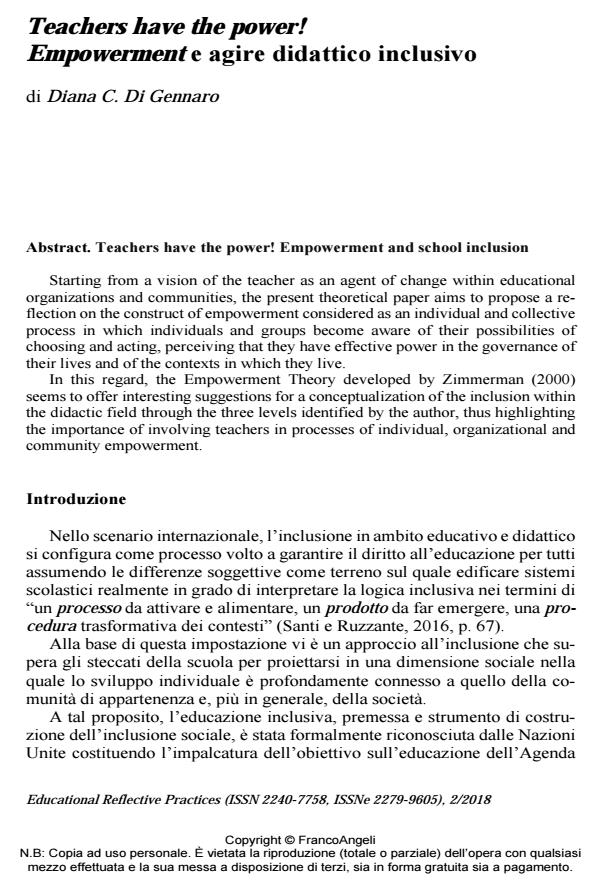Teachers have the power! Empowerment e agire didattico inclusivo
Titolo Rivista EDUCATIONAL REFLECTIVE PRACTICES
Autori/Curatori Diana C. Di Gennaro
Anno di pubblicazione 2019 Fascicolo 2018/2
Lingua Italiano Numero pagine 13 P. 143-155 Dimensione file 178 KB
DOI 10.3280/ERP2018-002010
Il DOI è il codice a barre della proprietà intellettuale: per saperne di più
clicca qui
Qui sotto puoi vedere in anteprima la prima pagina di questo articolo.
Se questo articolo ti interessa, lo puoi acquistare (e scaricare in formato pdf) seguendo le facili indicazioni per acquistare il download credit. Acquista Download Credits per scaricare questo Articolo in formato PDF

FrancoAngeli è membro della Publishers International Linking Association, Inc (PILA)associazione indipendente e non profit per facilitare (attraverso i servizi tecnologici implementati da CrossRef.org) l’accesso degli studiosi ai contenuti digitali nelle pubblicazioni professionali e scientifiche
Starting from a vision of the teacher as an agent of change within educational organizations and communities, the present theoretical paper aims to propose a reflection on the construct of empowerment considered as an individual and collective process in which individuals and groups become aware of their possibilities of choosing and acting, perceiving that they have effective power in the governance of their lives and of the contexts in which they live. In this regard, the Empowerment Theory developed by Zimmerman (2000) seems to offer interesting suggestions for a conceptualization of the inclusion with-in the didactic field through the three levels identified by the author, thus highlight-ing the importance of involving teachers in processes of individual, organizational and community empowerment.
Diana C. Di Gennaro, Teachers have the power! Empowerment e agire didattico inclusivo in "EDUCATIONAL REFLECTIVE PRACTICES" 2/2018, pp 143-155, DOI: 10.3280/ERP2018-002010